Antarctic rescue ship's stop-off thwarted
- Published
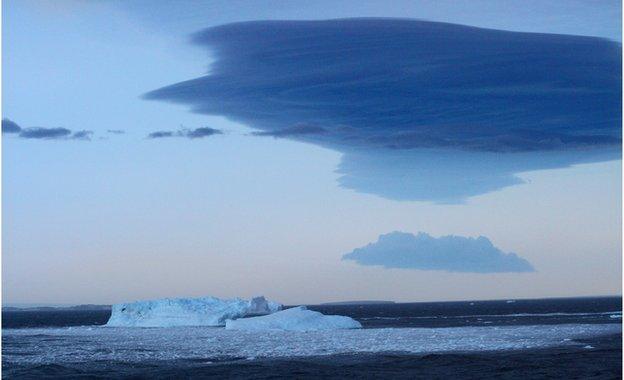
The ship is now cruising up and down in a holding position
BBC producer Andrew Luck-Baker was on board the Russian research vessel AK Shokalskiy when the ship became trapped in pack ice over Christmas. The 52 passengers were taken to an Australian Antarctic base aboard the ship Aurora Australis.
Andrew, who was covering an expedition for the BBC World Service's Discovery programme, reports on the mission to return the passengers home.
The Australian mercy mission icebreaker is being thwarted yet again in its attempt to unload cargo and fuel at Australia's Antarctic base, Casey.
The only compensation for the crew and passengers is that the Aurora Australis is cruising up and down what looks like a graveyard of gigantic icebergs, in a holding pattern for when the weather allows.
Master Murray Doyle lost two weeks when his vessel was ordered to assist the Academik Shokalskiy, the Russian ice-beset ship carrying the Australasian Antarctic Expedition 2013.
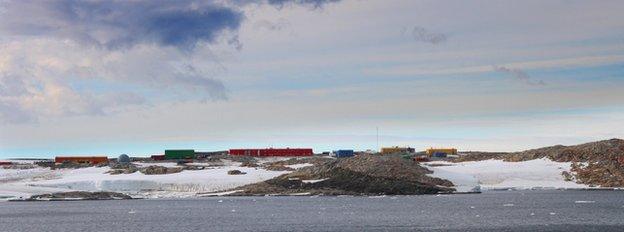
The Aurora Australis arrived at the Casey Antarctic base earlier this week
The Aurora returned to Casey on Tuesday 7 January. Six hours of offloading operations were ended with the arrival of bad weather.
Gusting at 40 to 50 knots, the strong south-easterly winds made the job too dangerous.
The ship has pulled back from the sheltered bay at Casey and is now travelling back and forth against a backdrop of spectacular icebergs, waiting for the weather to break.
The monsters in this iceberg alley or iceberg graveyard have all journeyed some distance from the east.
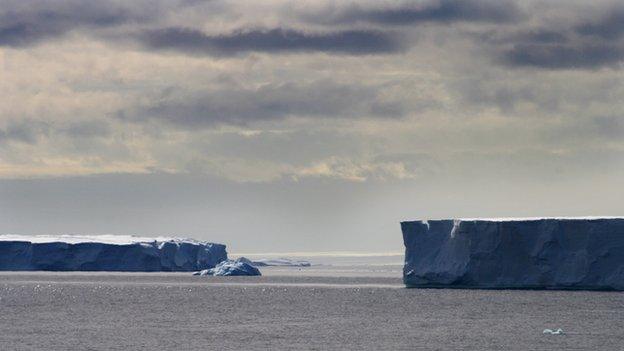
The ship's waiting game gave the passengers stunning close-up views of huge icebergs
Some have made journeys of thousands of kilometres from the Ross Sea, on the prevailing circumpolar current which circulates around Antarctica from east to west.
Still others will have calved off large glaciers tens to hundreds of kilometres distant.
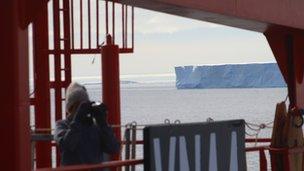
Many ice giants run aground in this sea area because of the relatively high shelf on the sea bed. The water depth is between 300 and 400m here.
The largest of the bergs rises several tens of metres above the sea surface.
The calving rate of icebergs from glaciers is predicted to increase as climate change proceeds in Antarctica.
Sights such as these may be more common in the frozen South in coming years and decades.
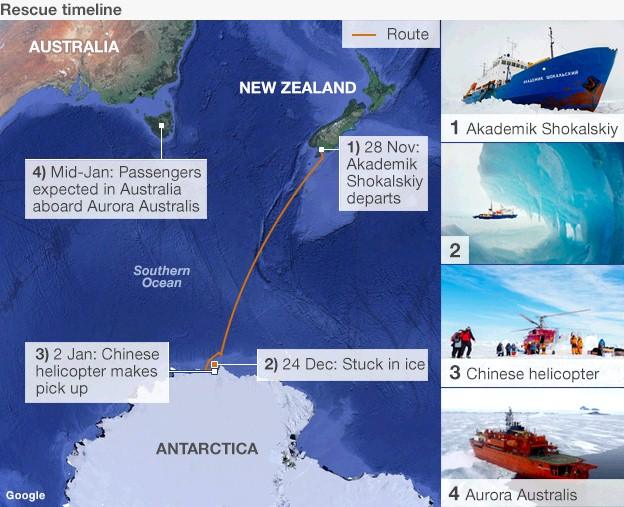
- Published7 January 2014
- Published7 January 2014
- Published4 January 2014